 |
 |
 |
| |
Racial and Sex PrEP Disparities Persist in US Veterans Study
|
| |
| |
IDWeek 2023, October 11-15, 2023, Boston
PrEP use disparities by race improved overall from 2019 through 2022, according to nationwide analysis of Veterans Health Administration (VHA) electronic records. But disparities persisted between blacks and whites nationally and especially in the South, and between women and men nationally and especially in the West.
Researchers from the Veterans Affairs Northeast Ohio Healthcare System noted that gains in PrEP use across the United States have proved inconsistent in nonveteran groups studied. To track PrEP use in the VHA, the biggest integrated health system in the country, by race and sex in four US regions from January 2019 through December 2022, they used the PrEP-to-need ratio (PnR). That ratio measures PrEP users in a demographic group relative to HIV incidence (new infections) in that group for a given period. A higher PnR indicates greater PrEP equity. Every VHA facility has equal access to all FDA-approved PrEP products, and veterans pay limited or no out-of-pocket costs.
For this study PrEP use meant 1 or more prescription fills for any FDA-approved PrEP product during each calendar year, excluding people with a diagnosis of HIV or HBV before the fill. The researchers defined a new HIV diagnosis as a first-ever positive HIV confirmatory test or detectable HIV viral load before first-ever antiretroviral fill in a calendar year.
Yearly PrEP use rose nationally in the VHA system by 57% (from 3844 to 6041 veterans) from 2019 to 2022. Over the same span, new HIV diagnoses in the VHA fell nationally by 12% across all racial and ethnic groups-dropping 7% in people assigned male at birth and 2.5% in people assigned female.
Across the country PnR rose (improved) for all racial and ethnic groups from 6.2 to 20.2 over the 4 study years. But by the end of 2022, PnR for whites remained nearly double that for blacks (15.5 versus 8.4). In the South in 2022, blacks accounted for 53.5% of all HIV diagnoses in the VHA system (versus all other races) but had only 34.3% of all PrEP users. In contrast, national percentages for HIV diagnoses and PrEP users in 2022 were 38.6% and 26.4%. In the Northeast respective fractions were 29.0% and 31.9%.
Across all four regions, PnR for birth sex males remained persistently higher than for birth sex females from 2019 through 2022 (12.4 vs 7.0 in 2022). Nationally in 2022, female veterans accounted for 7.0% of HIV diagnoses and 4.8% of PrEP users. That disparity was worst in the West (14.2% vs 4.1%) and best in the South (5.3% vs 5.4%).
The VHA investigators cautioned that the COVID pandemic may have curbed HIV testing and so led to a falsely lower PnR denominator-and thus an inaccurately higher PnR-especially in 2020. They noted that electronic records in the VHA do not provide "robust sexual orientation and gender identity data," so this study had limited ability to assess PrEP equity in sexual and gender minorities.
The VHA team concluded, that despite gains in PrEP use among veterans in the last 4 years, "racial and sex-based disparities along regional lines exist." They noted that PrEP use remains low in birth females and that tailored interventions are needed to boost PrEP use in blacks, especially in the South.
The researchers believe their findings "underscore that the underlying reasons for racial disparities in PrEP uptake go beyond equal access" to PrEP and could involve stigma and structural racism.
Reference
1. Musoke LS, Shumaker A, Van Epps P. PrEP inequity across geographic, racial and sex groups in a nationwide US veteran cohort. IDWeek 2023, October 11-15, 2023, Boston.
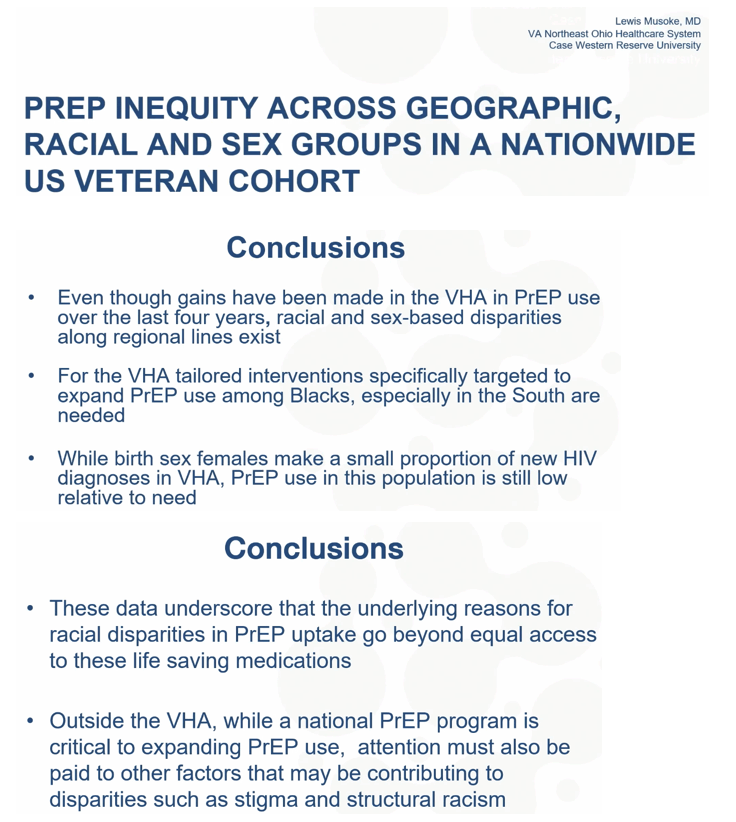
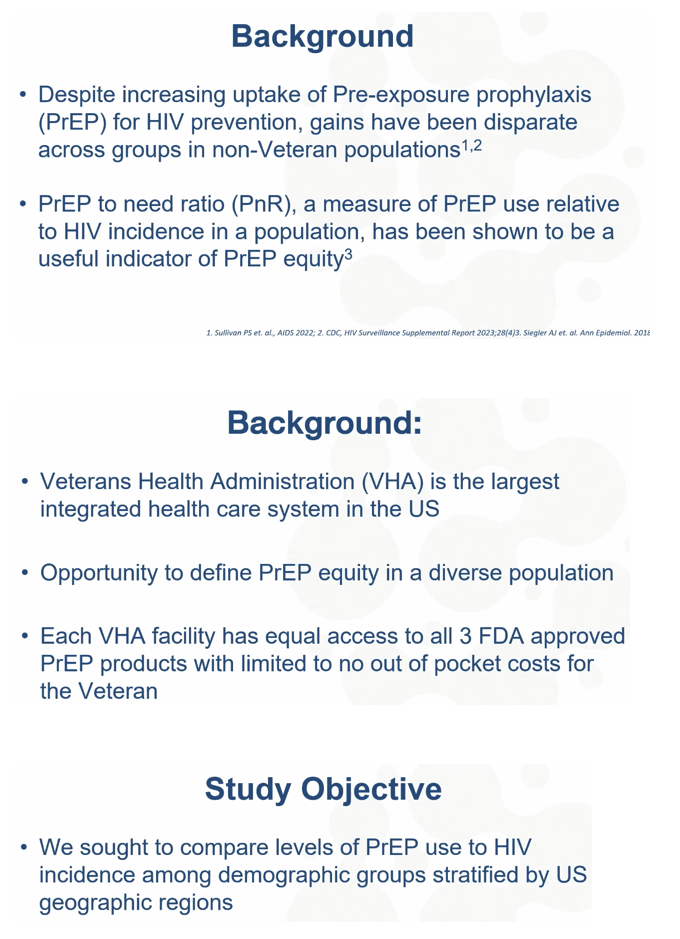
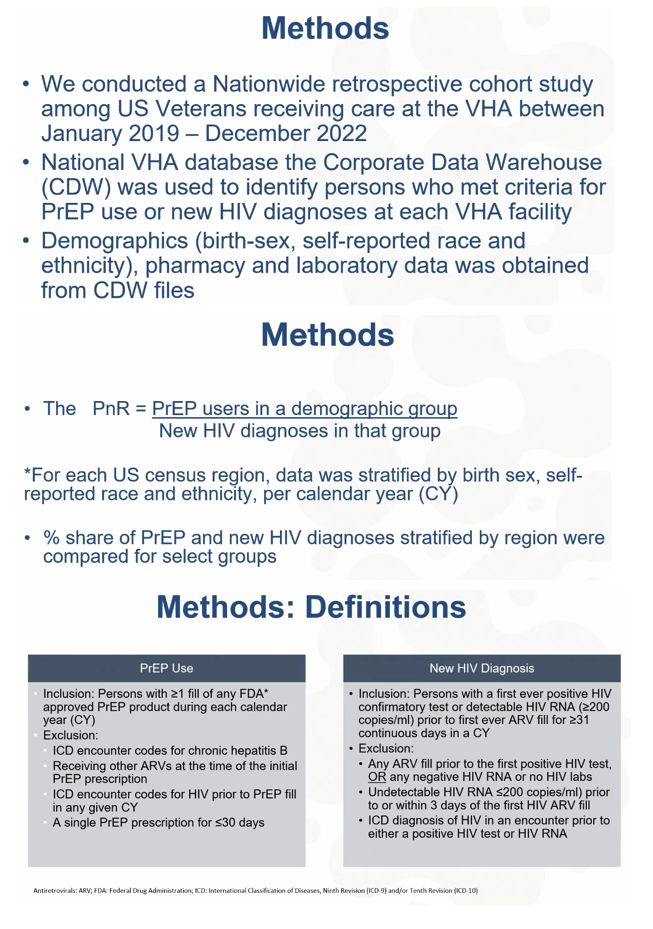
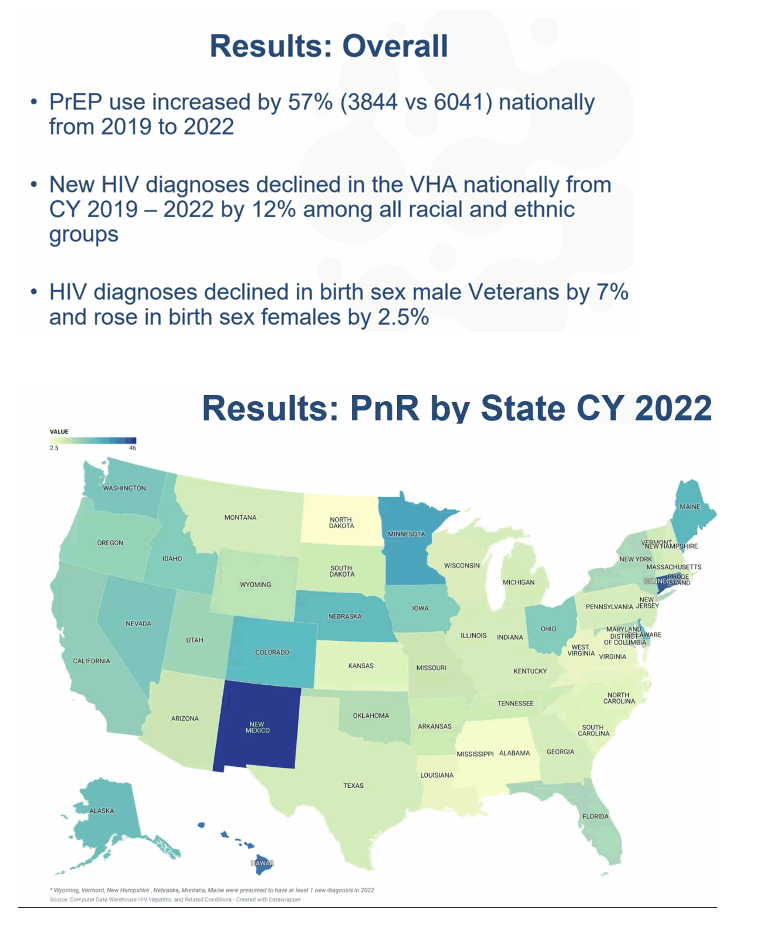
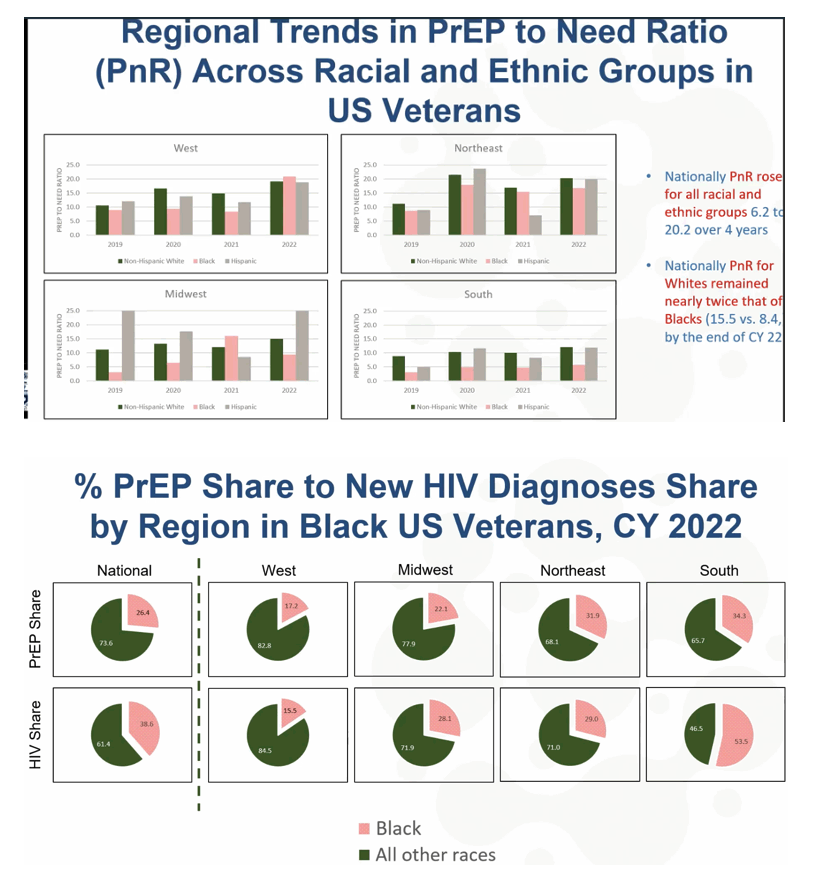
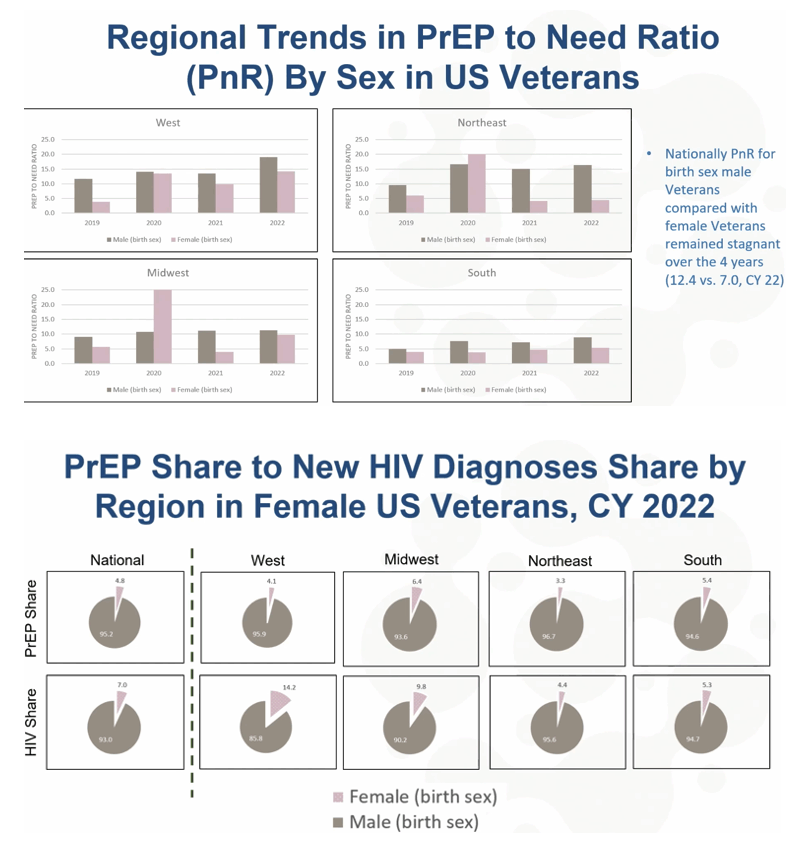
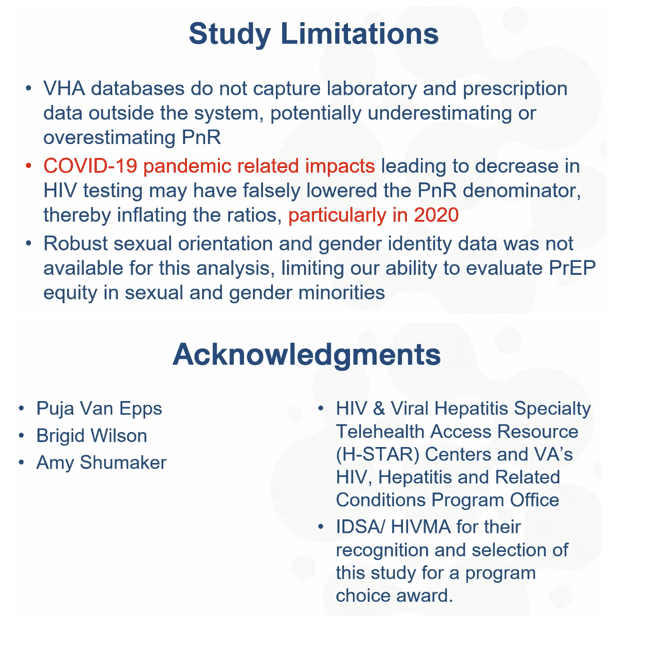
|
| |
|
 |
 |
|
|